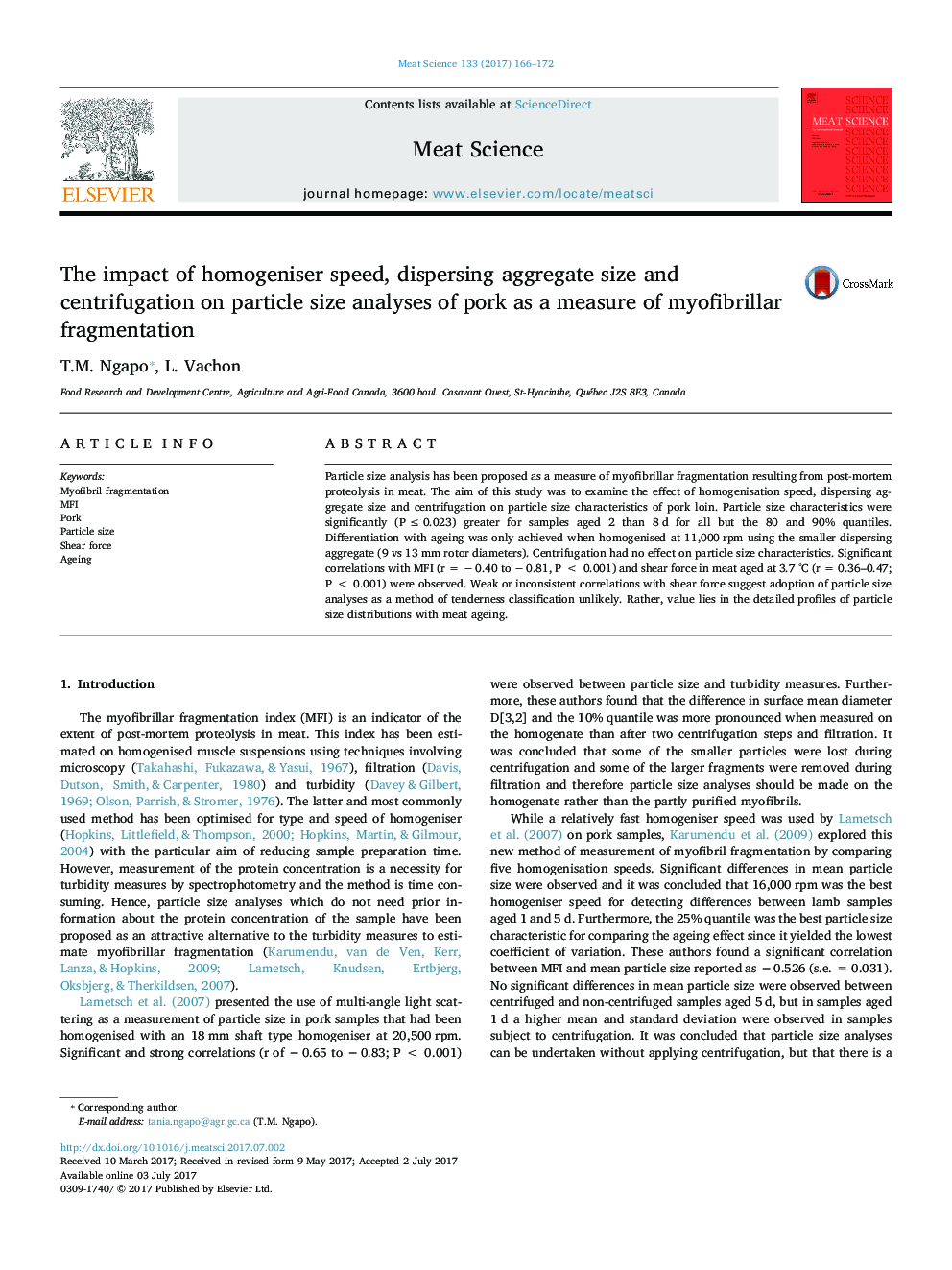| Article ID | Journal | Published Year | Pages | File Type |
|---|---|---|---|---|
| 5543308 | Meat Science | 2017 | 7 Pages |
Abstract
Particle size analysis has been proposed as a measure of myofibrillar fragmentation resulting from post-mortem proteolysis in meat. The aim of this study was to examine the effect of homogenisation speed, dispersing aggregate size and centrifugation on particle size characteristics of pork loin. Particle size characteristics were significantly (P â¤Â 0.023) greater for samples aged 2 than 8 d for all but the 80 and 90% quantiles. Differentiation with ageing was only achieved when homogenised at 11,000 rpm using the smaller dispersing aggregate (9 vs 13 mm rotor diameters). Centrifugation had no effect on particle size characteristics. Significant correlations with MFI (r = â 0.40 to â 0.81, P < 0.001) and shear force in meat aged at 3.7 °C (r = 0.36-0.47; P < 0.001) were observed. Weak or inconsistent correlations with shear force suggest adoption of particle size analyses as a method of tenderness classification unlikely. Rather, value lies in the detailed profiles of particle size distributions with meat ageing.
Related Topics
Life Sciences
Agricultural and Biological Sciences
Food Science
Authors
T.M. Ngapo, L. Vachon,
